Steph W. from SEOPressor


...help you check your website and tell you exactly how to rank higher?


94
score %
SEO Score

Found us from search engine?
We rank high, you can too.
SEOPressor helps you to optimize your on-page SEO for higher & improved search ranking.
By vivian on November 8, 2019

There are hundreds of factors that Google uses to determine the search engine ranking of a website. One particular that has taken on great importance over the years is to use domain authority of a website.
Domain authority is a metric developed by Moz. The higher your domain authority is, the more likely you are to earn a higher search engine ranking and to receive more and better web traffic.
Your domain authority is also a good way to measure your SEO efforts as well as compare the strength of your website to your competition’s websites.
Before we get into the meat of how domain authority is factored and how you can go about improving your site’s domain authority, it’s important to differentiate it from page authority.
Page authority is a similar metric, but instead of measuring the strength of an entire domain or subdomain, it measures the ranking strength of a single web page.
[bof_display_offer id=18950]
Domain authority is scored on a scale of 1 to 100 (1 being the worst, 100 being the best) using an algorithm designed by Moz.
Its logarithmic scale means that it’s much easier to improve your score if your domain authority is at a 20 or a 30 than if it was at a 70 or an 80.
Domain authority between 40 and 50 is considered average, between 50 and 60 is considered good and over 60 is considered excellent.

So how exactly does Moz determine your Domain Authority score? It uses over 40 different factors, but the following are some of the most important:
Although domain authority provides a better understanding of how your entire website is performing, it doesn’t mean that page authority isn’t as useful. In fact, the page authority of your site’s webpages has a direct impact on your overall domain authority as well as your search engine ranking, after all.
Moz uses a similar scale as domain authority to score page authority, meaning a 100-point, logarithmic scale. Keep in mind that even if you haven’t done anything to a page, its score may still fluctuate due to the fact that Moz is constantly updating their algorithm.
The following are some of the ranking factors that Moz uses to determine page authority:
Check out our recent blog post on how to increase page authority to get the best of both worlds.
Now that you understand why domain authority is important and the ranking factors used by Moz to determine a website’s domain authority, you’re probably wondering how you can put that to use in order to actually increase your domain authority score.
According to Moz, they update their DA metrics in real-time as links are being recognized. In relation to this is their link analysis data whereby the Moz Mozscape Index is updated every 3 to 4 weeks, which is the time you should check for your DA after you have made any updates to your website.
The following are the 9 steps that you should follow to increase domain authority, from the very beginning of your site’s creation:
Check out this video for a quick summary!
If you are just starting out, then pick a domain name that is relevant to your website. Look at our site, SEOPressor as an example. We are mainly focusing on the WordPress SEO plugin, which explains why we have the keyword ‘SEO’ in our domain:
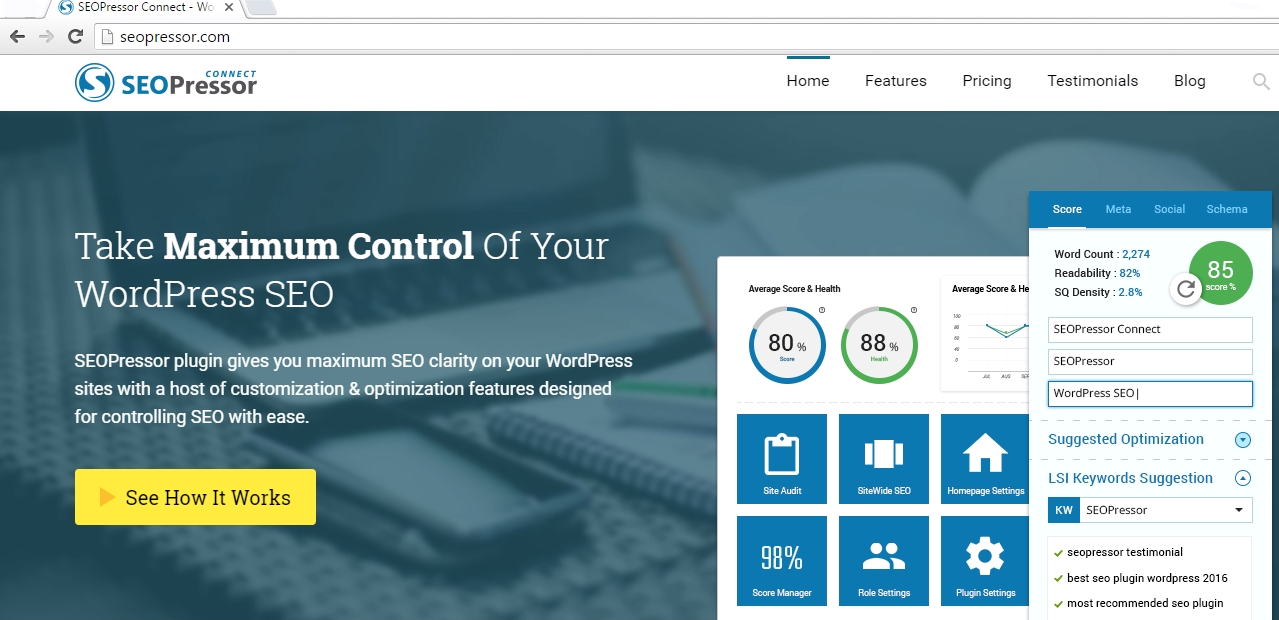
It should be something that’s relatively easy to remember so that visitors won’t have any issues returning to your site because they forgot your domain name. You may even want to buy an old domain so that you don’t have to make a domain age.
If you already have a domain, make sure it’s not going to expire anytime soon by renewing it for at least three to five years.
SEO matters for both Google search engine ranking as well as your domain authority, so make sure that you optimize all on-page code, including your title tags, image alt tags, and the content itself.

Additionally, include variations of your main keywords, keep all of your permalinks short and relevant, and create a sidebar section for new posts.
A useful tool to easily find variations of your main keywords is LSIGraph’s Keyword Research. It finds you semantically-related keywords that you can use in your content to increase its keyword density without falling into the trappings of keyword stuffing.
LSIGraph’s unique feature is its Opportunity Score, which calculates which keywords gives you the best opportunity to rank with the least amount of effort, so you can easily find low-hanging keywords to target for your content.
Another best SEO practice is to also boost your content and keyword relevance. This can be done by creating long-form, in-depth content that covers a wide breadth of the content.
This blog post you are reading, for example, though focuses on the steps to increase domain authority, also briefly describes what domain authority is, and how does it differ as compared to page authority.
This is important in building your content because it informs Google about your context, that your blog post is talking about “Apple” as a fruit and not referring to the iPhone conglomerate.
To help build an effective content structure, you will need two main ingredients: People also ask questions and related keywords. All of these can be found using BiQ’s Keyword Intelligence.
For example, you are looking to create a blog post on Reiki Healing, targeting people in the United States.
A quick search on BiQ’s Popular Question tab will reveal the subheadings you should add to create comprehensive content and get better chances to get into the featured snippet.
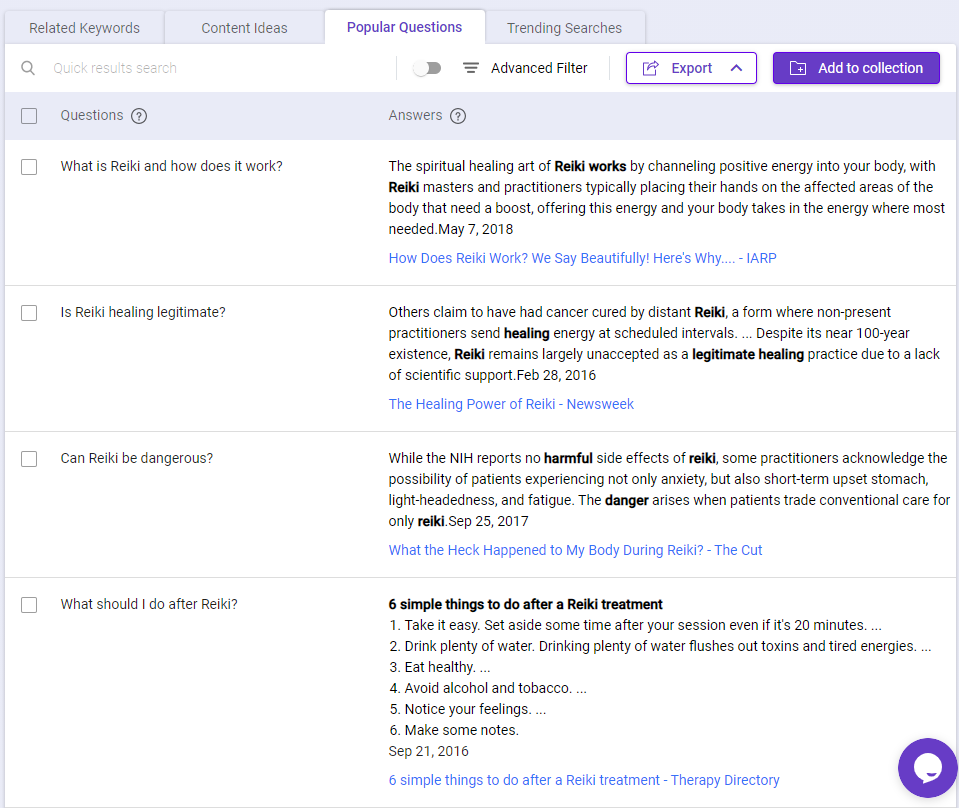
Switching to the Related Keywords tab, you will be able to see the total related keywords you can explore on the topic, and make more informed decisions on which to include based on the keyword volume, search intent, and relevance.
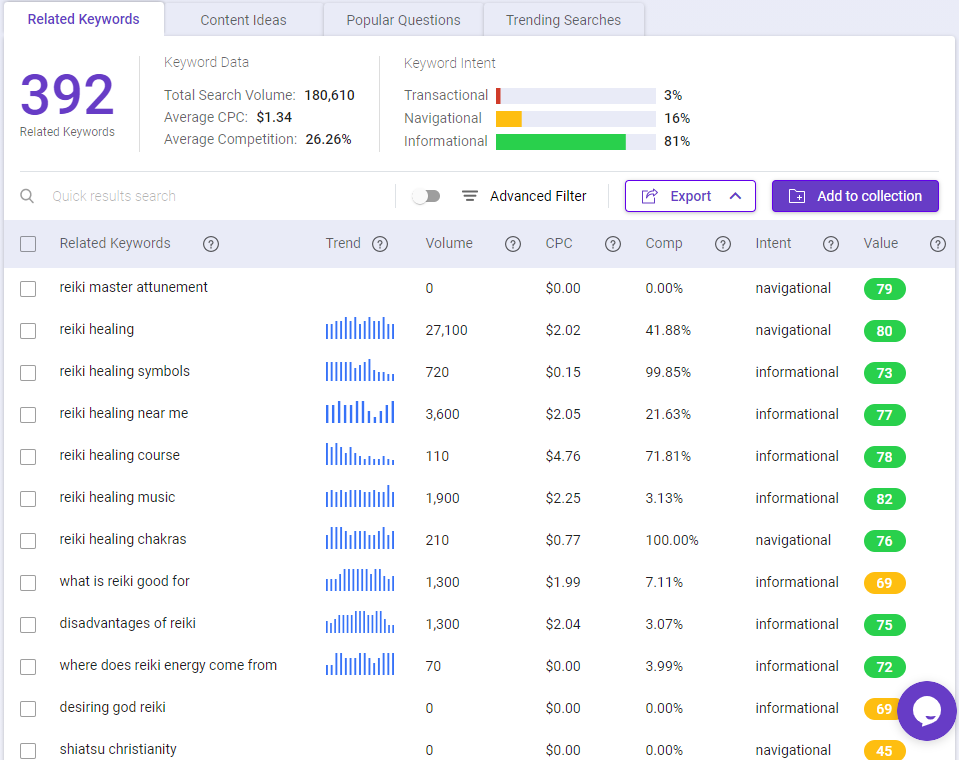
Once you have published your content, you can also use BiQ’s Content Intelligence to discover the best keyword composition and any potential content gap that will strengthen your website’s relevance in your niche.

It’s really easy to use. All you have to do is insert your link and keyword into the module and Content Intelligence will do the rest for you. Next, just optimize your content according to the suggestions provided and see your traffic and rankings improve!

In order to earn high-quality links from multiple domains, which both MozRank and MozTrust use as important factors, you need to create high-quality content that is published regularly.

The better your content is, the more likely it will be that another authoritative site will link to it. This means that your content has to be relevant to your brand and to your audience, informative, creative, and well written.
Many websites are so concerned about earning external links that they overlook the importance of internal links.
Internal links help to direct visitors to what they are trying to find, thereby improving their user experience. This means that if they’ve burrowed deep into your back catalog of blog posts, they can still easily find their way to your homepage by one of your internal links.
In SEOPressor, we usually do internal linking by suggesting other related blog posts to our readers just in case they would like to read more about that particular topic.
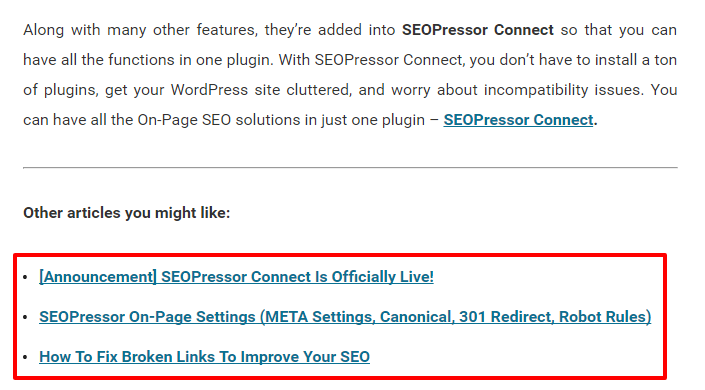
Internal links help prevent visitors from leaving out of frustration and also help to keep them engaged with your website at the same time. Additionally, internal links make it easier for search engines to index your entire site.
Every once in a while, you should go through your link profile and search for any backlinks that are bad or toxic. This will allow you to remove links from bad sources that could end up hurting your domain authority instead of helping it.
You should also remove any links posted throughout your website that lead to bad sites or are broken as these will have a negative impact as well.
It can be a hassle to check on each and every link on your website. To make things easier, you can use SEOPressor’s Link Manager that can help to manage all of your links in one place. You no longer have to check the links one by one. Instead, you can check the status of your link – whether it’s Broken or Alive on Link Manager itself.
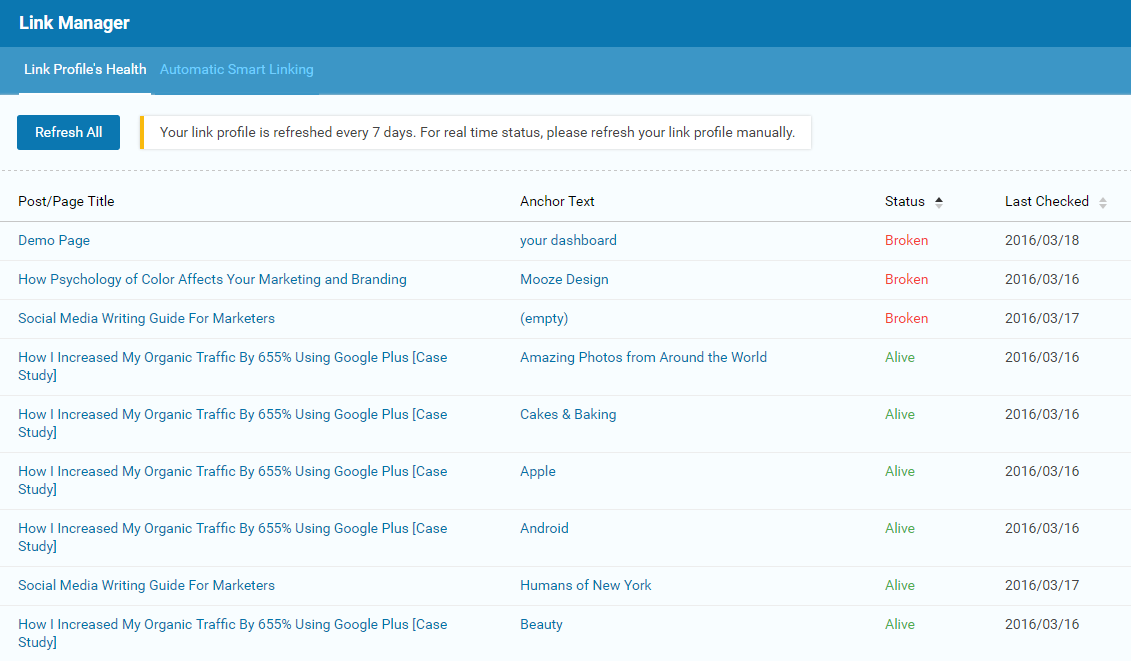
A huge number of online users access the web through mobile devices. If your website hasn’t been optimized for mobile use yet, then you’re way behind.
Not only will it hurt your mobile search engine rankings, but you’ll lose out on a lot of visitors who will simply leave your site once they realize that it’s not being properly displayed on their smartphone or tablet.
To check whether your website is mobile-friendly or not, you can visit this Mobile-Friendly Test by Google Developers page. It will analyze your web page and let you know how mobile-friendly your site is.
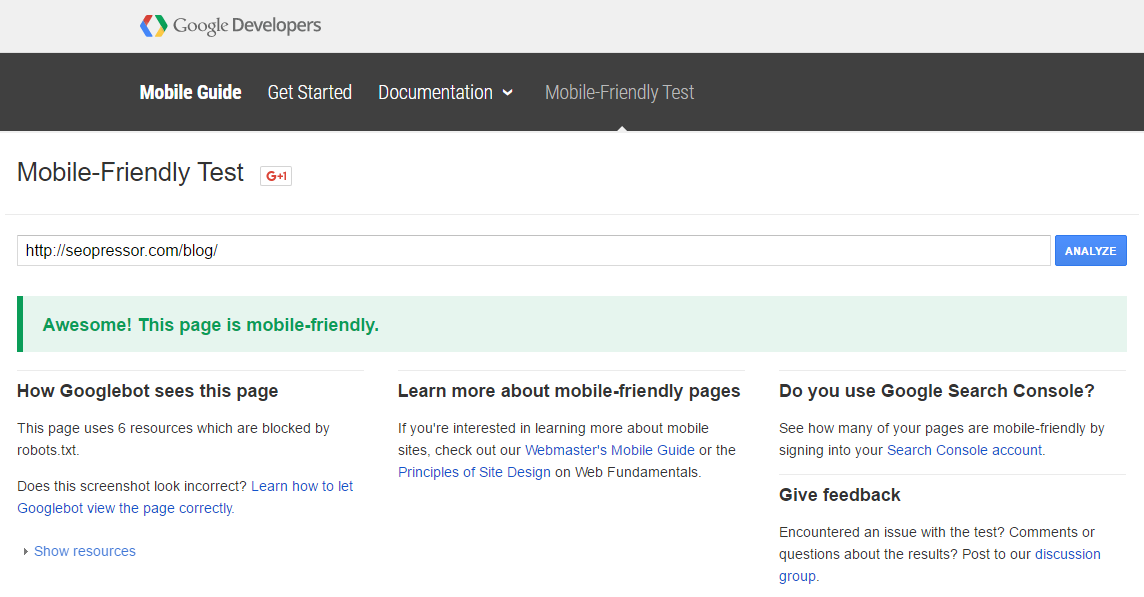
This can only be done by creating great content and engaging with your followers and consumers on social media in a meaningful manner.
By boosting your reputation as an authority, you’ll strengthen the identity of your brand, which will not only help increase traffic but also increase the number of external links you earn from other high-quality sources.
Another way to increase your website authority is by doing guest blogs on other websites that are relevant to your industry.
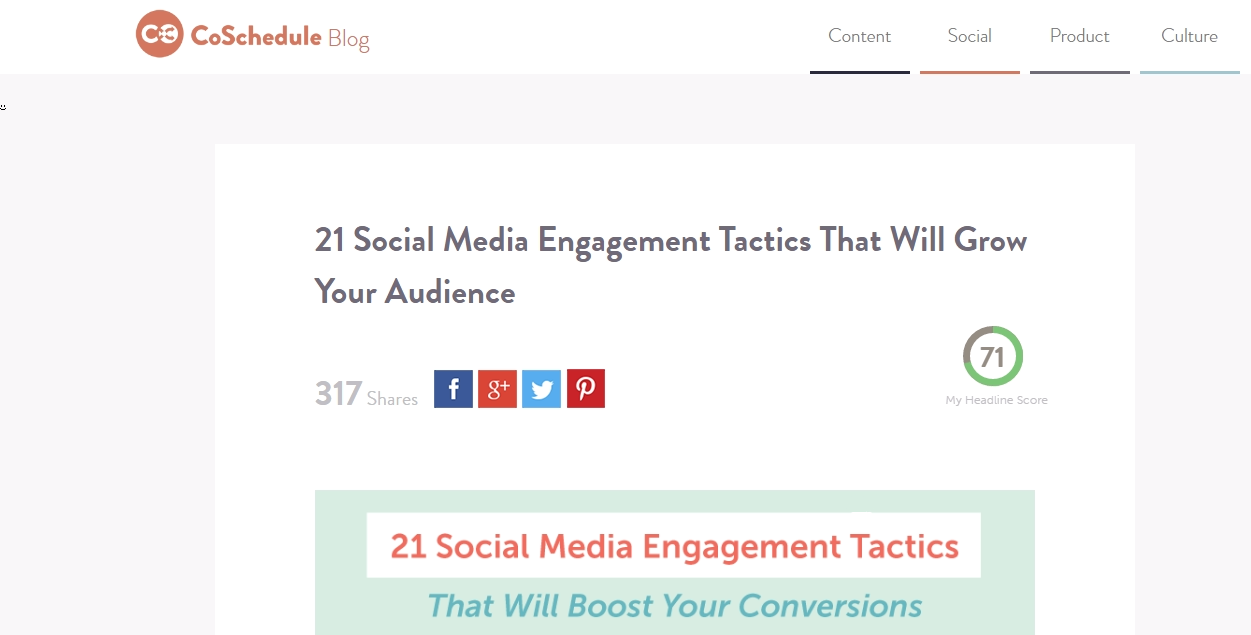
Poor loading speed can have a nasty effect on your bounce rate. Most users have very little patience for a page that takes too long to load and will end up leaving your website altogether if their patience wears out.
You can also check your website’s loading speed with the PageSpeed tool by Google Developers. Not only it will analyze the speed of your site, it will identify some ways for you to make your site faster and improve user experience.
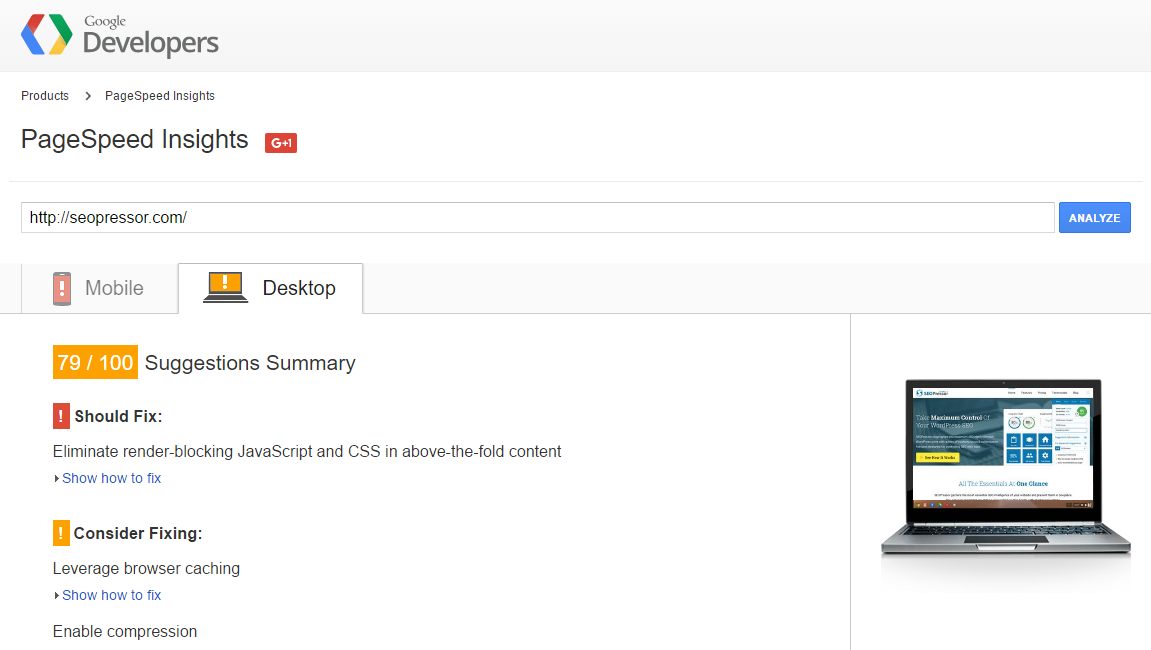
Because social signals are a big ranking factor, you’ll need to promote your content on social media in order to obtain those signals. Otherwise, your content is just going to sit on your site all by itself.
Promote your content on your various social media pages and make sure to encourage followers to like, share, or comment on it. You should also include social share buttons directly on your webpages.

Domain authority is important for a number of reasons. It allows you to judge the overall performance of your website. It also lets you compare your score to that of competing websites to see where you stand.
By being able to identify the domain authority of other sites, you can also identify other sites worth linking to in your content as well as sites that are industry authorities that are worth establishing a relationship with. Not to mention that it can help bring in stronger traffic.
Before you go, here’s a quick guide to checking your domain authority and a checklist on how to increase domain authority. Don’t forget to tick these off:
Ready to pump up your domain authority with SEO in mind? Spend 5 minutes on our SEO Quiz to test out your skills to make sure you’re on the right track! Test Your SEO Knowledge – SEOPressor
Updated: 7 January 2026


Save thousands of dollars (it’s 100x cheaper)

Zero risk of Google penalty (it’s Google-approved)

Boost your rankings (proven by case studies)
Rank High With This Link Strategy
Precise, Simplified, Fast Internal Linking.
